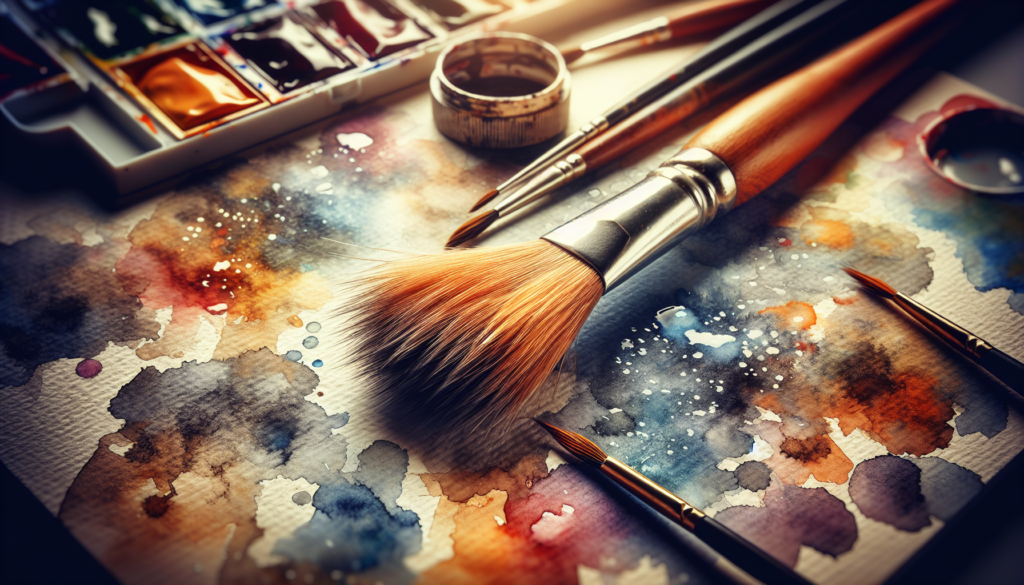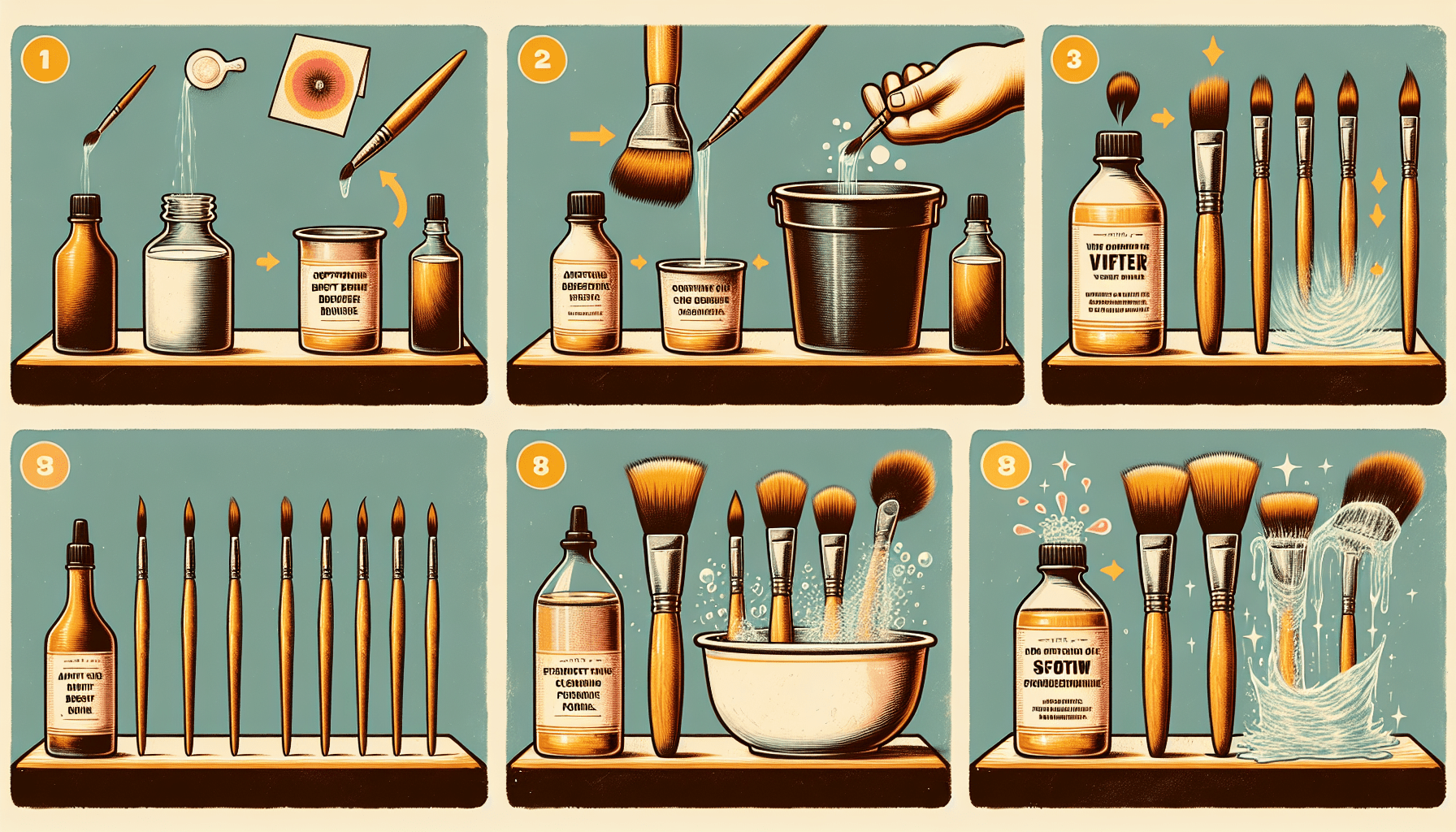Have you ever found yourself overwhelmed by the sheer variety of paint brushes available for watercolor art? As a watercolor artist, selecting the right brush is crucial not only for executing your artistic vision but also for enhancing your painting experience. This guide aims to provide a thorough review and comparison of the best paint brushes available for watercolor artists. Understanding the different types of brushes, their characteristics, and how they can work for you is essential in your journey to mastering watercolor art.

Understanding Paint Brushes for Watercolor
To make the most out of your watercolor practice or profession, it’s important to understand the specifics of what makes a paintbrush ideal for watercolor. The anatomy of a paintbrush includes the handle, ferrule, and bristles, each of which has a role in the functionality and performance of the brush.
Anatomy of a Paint Brush
The anatomy of a paintbrush consists of several components, each contributing to its overall performance and suitability for watercolor painting:
- Handle: Usually made of wood or plastic, the handle can vary in length. Watercolor brushes typically have shorter handles than those used for oils and acrylics, offering better control and comfort.
- Ferrule: This is the metal part that connects the bristles to the handle, holding everything together securely.
- Bristles: Also known as hairs, the bristles are the most critical part of the brush. They can be natural, synthetic, or a blend of both, affecting their functionality and usage.
Types of Bristles
The choice of bristles can significantly affect your painting style and outcome. Each type offers distinct characteristics:
- Natural Bristles: Made from animal hair, often sable or squirrel, these brushes are renowned for their water retention and softness, allowing smooth, fluid strokes.
- Synthetic Bristles: These are typically made from nylon or polyester. They are less expensive than natural bristles and offer durability and consistent performance.
- Blended Bristles: A combination of natural and synthetic hairs offers a balance, providing the benefits of both types.
Evaluating the Best Paint Brushes for Watercolor
Let’s dive into an evaluation of the best paint brushes for watercolor artists. The right brush can enhance the quality of your work and ease the painting process, making it beneficial to know what each option offers.
Criteria for Evaluation
When assessing paint brushes, there are a few critical factors to consider:
- Water Retention: The brush’s ability to hold water influences its performance in watercolor painting.
- Snap and Spring: These refer to how well the brush returns to its original shape after a stroke. A good snap helps create precise lines.
- Durability: Frequent use can wear out brushes quickly, so durability is an essential aspect.
- Cost-Effectiveness: Finding a balance between quality and price is often necessary, particularly for budding artists.
Recommended Brushes
After careful evaluation, here is a list of some of the best paint brushes available in the market today:
| Brush Name | Bristle Type | Features | Price Range |
|---|---|---|---|
| Escoda Versatil | Synthetic | Excellent snap, ideal for detail work | Mid-range |
| Winsor & Newton | Natural Sable | High water retention, soft bristles | High-end |
| Da Vinci Maestro | Natural Kolinsky | Superb control and durable | High-end |
| Silver Black Velvet | Blended | Versatile, good snap and water capacity | Mid to high |
| Princeton Neptune | Synthetic | Mimics natural squirrel hair, soft | Mid-range |
Detailed Review of Recommended Brushes
Exploring each recommended brush in detail can help you ascertain which one might suit your needs best, including both newly introduced artists and those more advanced in their craft.
Escoda Versatil
Escoda Versatil uses high-quality synthetic fibers, making these brushes an excellent choice for detailed work. They offer a satisfying snap, which is essential when you need precision. Their construction ensures durability and resilience, promising reliability for sustained use.
Winsor & Newton Series 7
Known for its luxurious natural sable bristles, the Winsor & Newton Series 7 set is favored among professional artists for its exceptional water retention capability. The softness of the bristles ensures smooth brush strokes that are ideal for creating washes and glazes. Although on the pricier side, the quality justifies the cost, delivering excellent performance and durability.
Da Vinci Maestro
The Da Vinci Maestro brushes are crafted with Kolinsky sable hairs, noted for their elasticity and strength. This brush provides outstanding control, making it suitable for complex watercolor techniques. Its high-end construction and premium materials assure longevity, making it a worthy investment for serious artists.
Silver Black Velvet
Silver Black Velvet brushes feature a blend of natural squirrel hair and synthetic filaments, offering a perfect balance of softness and durability. They are well-regarded for their capacity to hold large amounts of water and their ability to snap back to a fine point. This makes them highly versatile and suitable for various watercolor techniques.
Princeton Neptune
Princeton’s Neptune brushes are made with synthetic fibers designed to mimic the characteristics of squirrel hair. They offer softness and superb synthetic performance, making them ideal for artists who prefer a vegan option without sacrificing quality. They are particularly noted for their gentle strokes and smooth application.
Selecting the Right Brush for Your Needs
Selecting the right brush depends on multiple factors, including your personal painting style, budget, and specific requirements for the projects you undertake. Each brush serves a unique purpose and offers different advantages, so it is essential to assess what aspects are most important for your work.
Matching Brush Styles with Techniques
Your choice should align with the techniques you employ and your desired effects:
- Detail Work: Brushes with a good snap, like Escoda Versatil, enable precise strokes needed for fine details.
- Wash Techniques: Soft, high-capacity brushes such as Winsor & Newton are ideal for broad, sweeping washes.
- Mixed Media: Versatile brushes like Silver Black Velvet accommodate various media and layering techniques.
Budget Considerations
Financial constraints are always an important consideration, especially for beginner artists. While top-tier brushes might offer superior quality, many mid-range options provide excellent performance and durability:
- Beginners: Consider synthetic brushes like Escoda Versatil or Princeton Neptune, which provide high quality at reasonable prices.
- Advanced Artists: If budget allows, investing in high-end natural bristle brushes such as Da Vinci Maestro or the Winsor & Newton Series 7 can enhance your painting experience significantly.

Care and Maintenance of Watercolor Brushes
Proper care and maintenance are necessary to extend the life of your watercolor brushes and maintain their performance. A few general tips can help:
Cleaning Your Brushes
Always clean your brushes immediately after use to remove paint residues. Use lukewarm water and mild soap to gently wash the bristles without pulling on them. A mild soap specifically formulated for artist brushes is recommended.
Correct Storage
Ensure your brushes are stored properly:
- Dry them horizontally: This prevents water from seeping into the ferrule, which can damage the glue.
- Protect the bristles: Use a brush holder or wrap when not in use to protect the bristles from damage.
Regular Maintenance
Conduct regular checks for wear and tear. Trim stray bristles, and reshape them if needed. This small maintenance act ensures longevity and consistent performance.
Conclusion
Identifying the best watercolor paint brushes involves assessing types, materials, and individual preferences. This guide has explored essential characteristics and recommendations, empowering you to make informed purchasing decisions. Knowing the strengths and limitations of each type of brush will help you achieve your artistic objectives, ensuring that your work is both enjoyable and successful. Whether you’re starting your watercolor journey or looking to upgrade your tools, selecting the right brush is a crucial step towards a more fulfilling painting experience.



